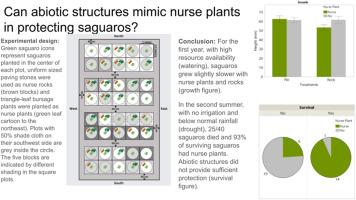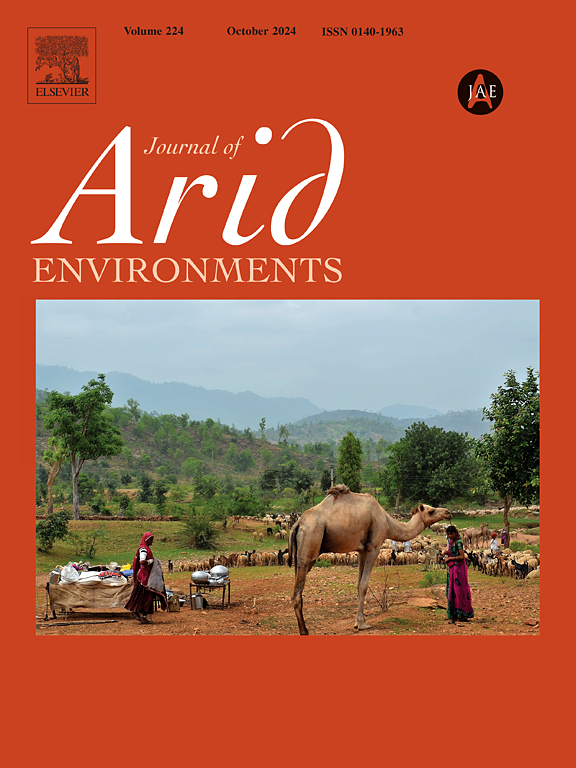The benefits of a nurse plant, shade cloth, and nurse rock on Carnegiea gigantea (saguaro) growth and survival shift along a stress gradient
IF 2.5
3区 环境科学与生态学
Q2 ECOLOGY
引用次数: 0
Abstract
Facilitation tends to be prevalent in arid lands as exemplified by nurse plant relationships. Carnegia gigantea (saguaro), a foundation species in the Sonoran Desert, faces threats of climate change and changing fire regimes. Since it is known to depend on nurse plants, restoring saguaros post-fire or plantings to support regeneration of the species will also require consideration of nurse plants. We sought to understand the specific tradeoffs and mechanisms of planting saguaros with nurse plants or structures mimicking nurse plants. We planted 40 saguaro plants in individual plots with a fully crossed combination of nurse plants, nurse rock, or shade cloth, and controls with five replicates in an outside planter in Scottsdale, Arizona, USA. We watered plots for ten months before turning off the irrigation. Saguaros grew best without nurse plants and nurse rocks in the first year, but only 15 survived the second summer without supplemental water, and of those, 14 were under nurse plants. Photosynthetically active radiation was associated with saguaro survival but not mycorrhizal inoculum potential or temperature. Nurse plants, but not treatments mimicking nurse plants, clearly facilitated saguaro survival under drought conditions, outweighing competition for light and slower growth.

护理植物、遮荫布和护理岩对巨鳄的生长和生存的好处沿着应力梯度变化
促进在干旱地区普遍存在,看护植物关系就是例证。仙人掌是索诺兰沙漠的基础物种,面临着气候变化和火灾制度变化的威胁。由于已知它依赖于护理植物,因此在火灾后恢复或种植以支持物种再生也需要考虑护理植物。我们试图了解与护理植物或模仿护理植物的结构种植树蛙的具体权衡和机制。我们在美国亚利桑那州斯科茨代尔的一个室外种植槽中,用护理植物、护理石或遮荫布的完全杂交组合在单个地块上种植了40株仙人掌,并进行了5个重复的对照。我们灌溉了十个月才停止灌溉。第一年在没有看护植物和看护石的情况下长得最好,但在没有补充水分的情况下,第二年只有15个存活下来,其中14个在看护植物下。光合有效辐射与南瓜存活率有关,但与菌根接种势和温度无关。护理植物,而不是模仿护理植物的处理,显然促进了壁虎在干旱条件下的生存,超过了光照和生长缓慢的竞争。
本文章由计算机程序翻译,如有差异,请以英文原文为准。
求助全文
约1分钟内获得全文
求助全文
来源期刊

Journal of Arid Environments
环境科学-环境科学
CiteScore
5.70
自引率
3.70%
发文量
144
审稿时长
55 days
期刊介绍:
The Journal of Arid Environments is an international journal publishing original scientific and technical research articles on physical, biological and cultural aspects of arid, semi-arid, and desert environments. As a forum of multi-disciplinary and interdisciplinary dialogue it addresses research on all aspects of arid environments and their past, present and future use.
 求助内容:
求助内容: 应助结果提醒方式:
应助结果提醒方式:


